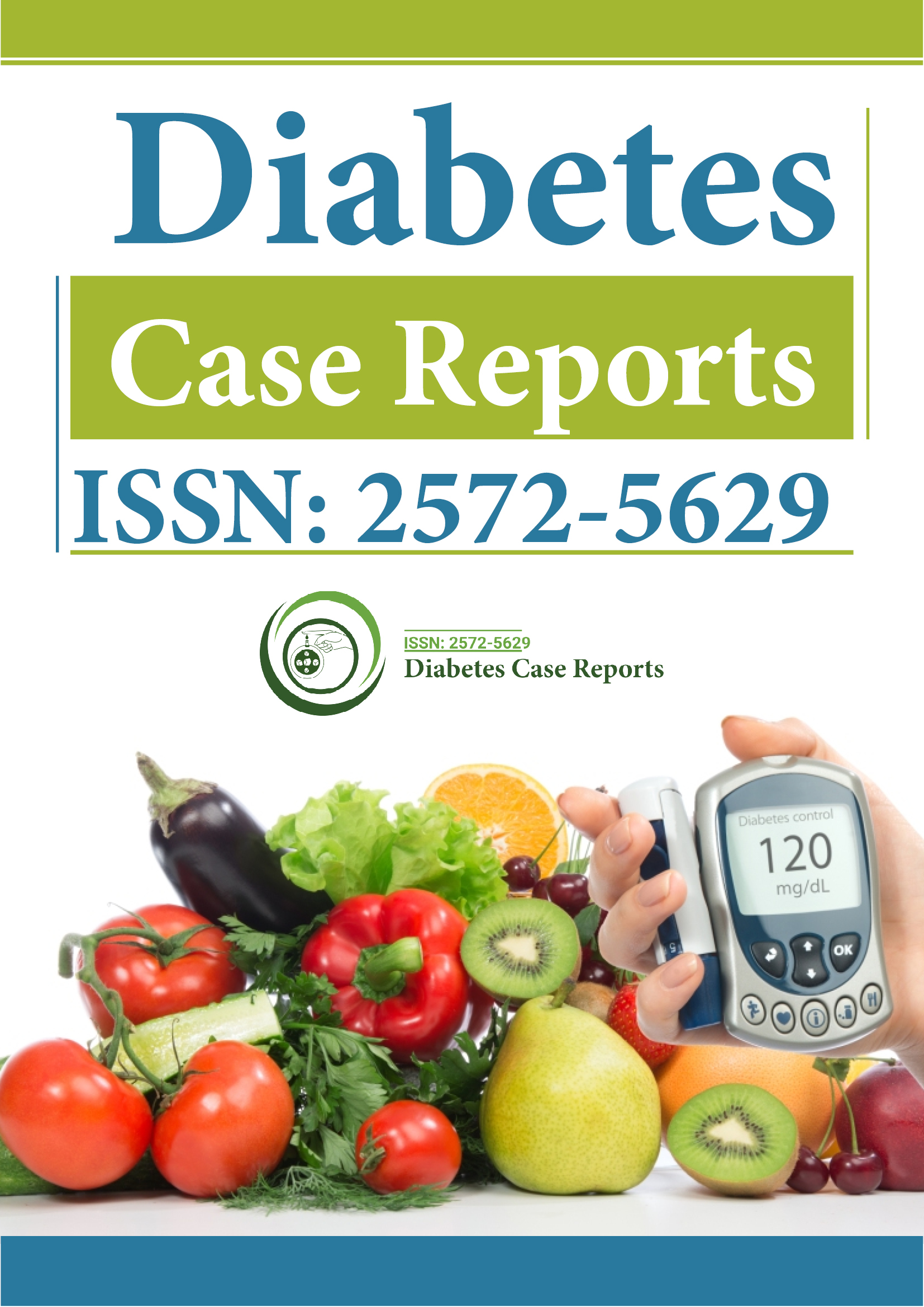Indexed In
- RefSeek
- Hamdard University
- EBSCO A-Z
- Euro Pub
- Google Scholar
Useful Links
Share This Page
Journal Flyer

Open Access Journals
- Agri and Aquaculture
- Biochemistry
- Bioinformatics & Systems Biology
- Business & Management
- Chemistry
- Clinical Sciences
- Engineering
- Food & Nutrition
- General Science
- Genetics & Molecular Biology
- Immunology & Microbiology
- Medical Sciences
- Neuroscience & Psychology
- Nursing & Health Care
- Pharmaceutical Sciences
Perspective - (2022) Volume 7, Issue 6
Clinical Methodologies Insulin and Injecting Systems
Marcel Farrell*Received: 17-Oct-2022, Manuscript No. DCRS-22-18962; Editor assigned: 20-Oct-2022, Pre QC No. DCRS-22-18962 (PQ); Reviewed: 09-Nov-2022, QC No. DCRS-22-18962; Revised: 18-Nov-2022, Manuscript No. DCRS-22-18962 (R); Published: 28-Nov-2022, DOI: 10.35841/2572-5629.22.7.134
Description
The hormone insulin regulates the body's level of blood sugar, commonly known as glucose. It's possible that people with diabetes doen't produce insulin appropriately from the pancreas. Sugar accumulates in the blood and runs out into the urine, leaving the body exhausted. Serious health issues might develop over time as a result of excessive blood sugar levels. Syringes, insulin pens, insulin pumps, and jet injectors are some of the different insulin administration methods. In which treatment is respond for the patient that will be done with the advice of the doctor. Syringes are still a common method of giving insulin. The majority of insurance providers provide them, and they are the least priced choice. Persons with Type 1 diabetes must take insulin, and patients with Type 2 diabetes may need to take insulin. The most effective method to inject insulin is by syringe; however there are other insulin pens and pumps. For consistency, insulin should be given in the same approximate region of the body, but not precisely in the same spot. The best time for insulin treatment to match with meals so that the body can respond and process the glucose that is taken in.
Typically, a very little needle is used to inject insulin under the skin. An insulin pen may also be used to inject it. Although the doctor will show precisely how to inject the insulin, these are the fundamentals:
• Hand-washing
• Remove the plastic lid from the insulin container, and then use an alcohol-soaked cotton swab to clean the top of the bottle
• Pull back the syringe's plunger to inject air into it at equal rate of insulin the patient were currently taking (measured in units). Insert the syringe needle through the insulin bottle's rubber cap. By advancing the syringe plunger, inject air into the bottle. Turn the bottle's position
Syringe and insulin pen
Syringes vary in the amount of insulin they contain and the size of the needle. They are made of plastic and should be discarded after one use. The needle length typically used in insulin therapy was 12.7 mm. Recent methods by trusted source show that small needles of 8 mm, 6 mm and 4 mm are effective regardless of body weight. This makes insulin injections less painful than before. Some insulin pens contain an insulin cartridge that is inserted into the pen, and some are pre-filled with insulin and discarded after all the insulin has been used. Selected, insulin is injected through the needle as if using a syringe. Cartridges and prefilled insulin pens contain only one type of insulin. Insulin pen can be in two types i.e, disposable insulin cartilage and reusable cartlage. Insulin can be injected into the fat which is just below the skin using a syringe and needle, or a pen-like device containing insulin with a needle attached. The frequency depends on the type of diabetes, blood sugar levels, and meal frequency. We can even do it multiple times a day.
Insulin pump
The size of an insulin pump is comparable to a small cell phone. An hourly basal dose of rapid or short-acting insulin can be received from it. Calculate the dose, the insulin in the pump provides the bolus when the patient eats or when the blood sugar level is high. The semi-permanent placement of the thin plastic tube into the fatty layer beneath the skin-typically in the upper arm or stomach region-allows the pump to supply insulin to the body. It will be shown how to use and where to place the tube by the doctor or a health education specialist. To deliver ultra-rapid-acting insulin at the start of meals, inhaled insulin is administered using an oral inhaler. Along with injectable longacting insulin, inhaled insulin is used.
Conclusion
Although insulin therapy might sometimes be difficult, it effectively lowers blood sugar levels. Consult to the doctor if the patient encounters any problems with the insulin regimen, such as difficulty avoiding very low or very high blood sugar levels, to determine if any adjustments are necessary. We can avoid issues associated with diabetes and live an energetic, healthy life by adapting to an insulin regimen that suits the needs and way of life.
Citation: Farrell M (2022) Clinical Methodologies of Insulin and Injecting Systems. Diabetes Case Rep. 7:134.
Copyright: © 2022 Farrell M. This is an open-access article distributed under the terms of the Creative Commons Attribution License, which permits unrestricted use, distribution, and reproduction in any medium, provided the original author and source are credited.
